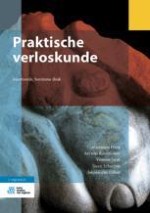Samenvatting
Een ongecompliceerde baring, zoals beschreven is in H.
6, wordt over het algemeen niet van het ene op het andere moment een gecompliceerde baring. Geleidelijk doen zich één of meerdere symptomen voor die extra monitoring, diagnostiek of interventie vereisen. Nog elk jaar neemt het aantal verwijzingen durante partu toe. Dat komt gedeeltelijk door nieuwe medische inzichten, maar ook door ongeduld bij de barende vrouw en de verloskundig professional. Met enige medicamenteuze ondersteuning, zoals bijstimulatie of pijnbehandeling, maken de meeste vrouwen een verder ongecompliceerde baring door. Nederland behoort tot een van de weinige hogelonenlanden met een sectiopercentage < 20 %. In dit hoofdstuk komen de stoornissen aan de orde die het verloop van het eerste, tweede, derde en vierde tijdperk van de baring kunnen compliceren, alsook de acute verloskundige situaties.
